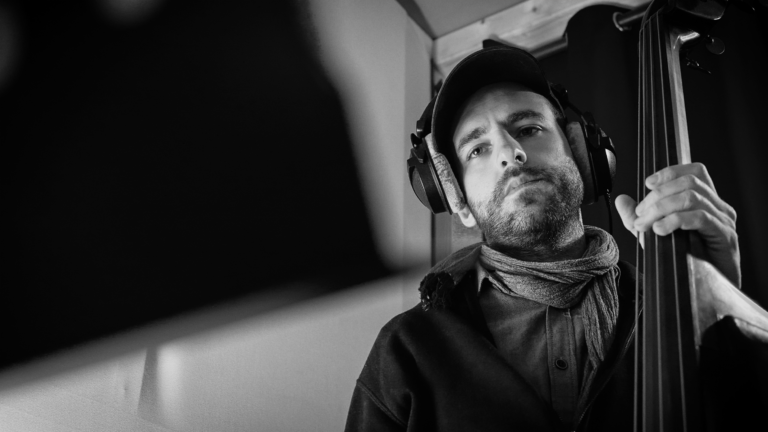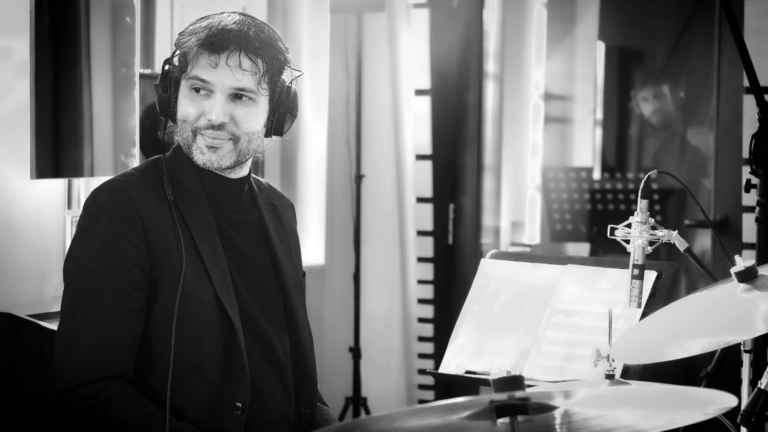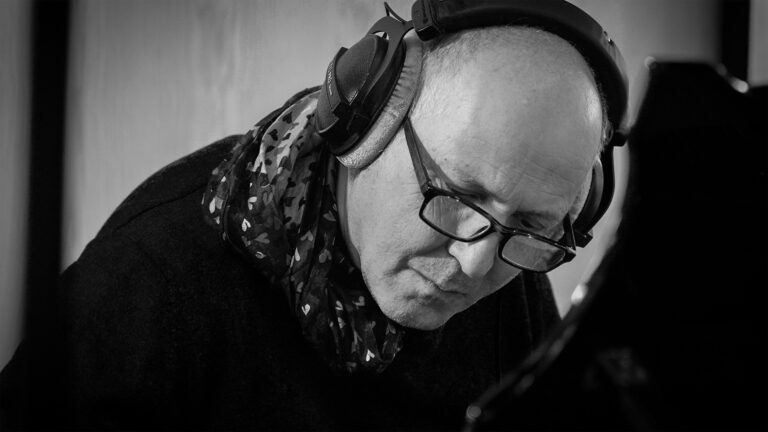TWO WORLDS
The idea for the TWO WORLDS project came to me in Santa Barbara, California, while I was preparing for a concert at the historic Lobero Theatre on the palindrome date, 22-2-22, with my “West Coast” Trio. The two worlds are the ones I have experienced since the beginning of my musical journey: a love for jazz and classical music, free improvisation and structured composition, my Italian culture and the American culture of my adopted home.
The album is a collection of seven original compositions and two arrangements representing the auspicious reconciliation of these apparent dualities. The compositions, conceived for the acoustic trio with piano, are at times inspired by the sound of Bill Evans’ trio, but also by the atmospheres of Northern European minimalism.
The harmonic and timbric palette from which I draw is the fruit of my travels, intersections and contaminations, and eclectic musical experiences. These tunes represent a stratification of musical layers accumulated over the years: melodic fragments, harmonic structures, and rhythmic cells which I continue to explore within the trio and revisit from different perspectives.
Antonio Artese, piano
Stefano Battaglia, double bass
Alessandro Marzi, drums
TWO WORLDS - DUE MONDI
LINER NOTES BY STEFANO JACOVIELLO
First among the art forms born in the twentieth century, together with cinema, jazz has always been an effective metaphor for the society from which its first cries emerged. It is not possible and would be incorrect to define it as a musical genre. Jazz is better classified as a type of artistic practice that allows each one of its participants to contribute fundamentally to a creation that, by its very nature, is always collective. Each one of these contributions brings with it a view of the world, the weight of the technical capabilities of the artist and their emotions, all of which are expressed in various languages, cultures, and even in the facial expressions and movements of the artists’ bodies as they play.
It is for this reason that, if it is possible to determine approximately when jazz originated, it would be extremely unlikely to say where and by whom jazz was born. Because from each musical phrase, sequence of chords, and rhythmic form, traces emerge from at least two worlds: the traditions of classical and popular/folk music; the narrative myth and the rituals that concretely renew it during each execution; and Europe and the United States, next to Latin America.
In this way, between a researched equilibrium and an excessive letting oneself go, from the melodic lyricism of the song to an anchoring by the percussion, the dual nature of Antonio Artese’s music happily transpires. In the opening tune, Two Worlds, the Latin rhythm bends the articulation of a rhapsodic piano that reminds us of the late 19th century tradition. Then, we find the classic “Coltrane changes” of Giant Steps interwoven with the vocabulary of jazz, forming the structure for Preludio. Sustained by these, we become open to the dissonant modulations of Hymn, a chorale tempered again with Latin accents. The same contrast between thoughts and musical colors finds space in Icarus, but its South American aura is not the only grandiose element.
Stefano Battaglia’s bass and Alessandro Marzi’s drums often guide the trio rhythmically along the lines of “even eight” time, as in Niente. It’s a beat that, starting around the 1970s, has compelled the jazz language to absorb ideas and sounds coming from rock and the European tradition. The influence of the latter takes centerstage in Lila, where the imaginative sounds of the opening bars lay the foundations for a song with a traditional flavor and narrative pace that arises and then unfolds into improvisations on a series of variations.
The most characteristic trait of Artese’s music is the predisposition of melody, evident in the ballad Julita. However, the best demonstration occurs in Un bel dì: Cio Cio-san’s celebrated aria from “Madame Butterfly” and Artese’s homage to Giacomo Puccini. The images evoked by that tune constitute an invitation to reflect on the condition of forgotten women as conflicts continue to scorch the lands of the East.
The feeling of being suspended between the two worlds constructed by Antonio Artese culminates with the final track, Voyage. Here, well planted roots with their view fixed upon the horizon seem like a contradiction, but they are the best way to seek and embark on other journeys, opening oneself up to what is to come.
(translation from Italian by Samantha Stout)


